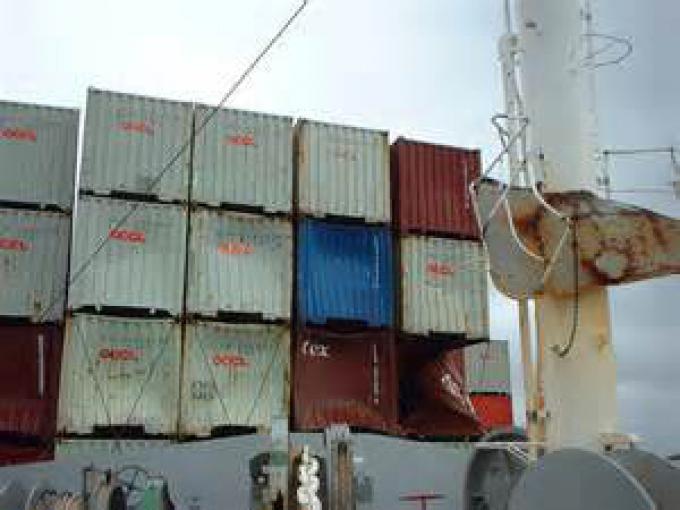One of the examination of the verification on audit ISM Code of Safety Management Certificate (SMC) is the process of lashing container vessel, this was delivered by Sjaifuddin Thahir, - Corporate Communication BKI. Vessel crew shall ensure that there is adequate lashing material made available to the terminal for suitably lashing the containers at point of work. Vessel shall have the lashing plan displayed and the terminal shall perform lashing of the containers as per this plan. Duty officer to inspect lashing as and when loading is completed at a bay. Terminal will not entertain any lashing request for a particular bay, 1 hour after loading is completed. Master of the vessel is requested to ensure that the container lashings are inspected continuously as it is being performed, and if any discrepancy observed same shall be brought to the notice of the terminal Shift in Charge immediately. All lashing materials and tools provided by the vessel should be in good condition and certified for use by a competent authority. Vessels having manual twist locks need to be changed over to automatic twist locks system as early as possible.
Container damages
While loading containers onto the vessel. if the vessel crew notice any damage on the containers, same shall be brought to the notice of terminal staff. Subject to verification of such damage, requisite formalities will be completed by the terminal Shift In Charge. Similarly if any damage is observed on-board the vessel while discharging containers, same will be brought to the notice of the duty deck watch by the terminal staff. Subsequently the container will be moved to the storage yard. Master of vessel in the meantime will need to endorse Container Damage Report prepared by the terminal staff. Master of the vessel shall inform terminal in advance through the local shipping line if any container is found to be damaged at the previous load port or occurred while in transit. If the container which needs to be discharged from the vessel is in damaged condition and is unsafe to discharge, then discharging of the damaged container from the vessel will lie at the discretion of the terminal management. If the damaged container is hazardous in nature or the cargo is leaking, terminal will be constrained not to handle this as well as those containers stowed adjacent to it due to safety reasons. (st/bki)


Recent Post
The Directorate General of Sea Transportation carries out the Oversight Cooperation Agreement Progra
The Directorate General of Sea Transportation carried out an Oversight at the Head Office of PT Bureau Klasifikasi
New BKI Medan Branch Office Increases Business Effectiveness and Productivity
As a state-owned holding company for survey services - IDSurvey, in 2022, BKI Medan will contribute 17.5 percent of 100
Biro Klasifikasi Indonesia (BKI) Collaborates with Badak LNG to Develop Shipping Resources and Cert
PT Biro Klasifikasi Indonesia (Persero) or BKI as the parent BUMN of IDSurvey Holding initiated cooperation in the
BKI Wins the 2023 GRC Award as The Best in Corporate Risk Management
PT Biro Klasifikasi Indonesia (Persero) or BKI won an award at the 2023 GRC & Performance Excellence Award. This
Visit to the Chinese Classification Board
On September 12-13 2023, the IDSurvey Board of Directors visited CCS in order to strengthen cooperation between the two